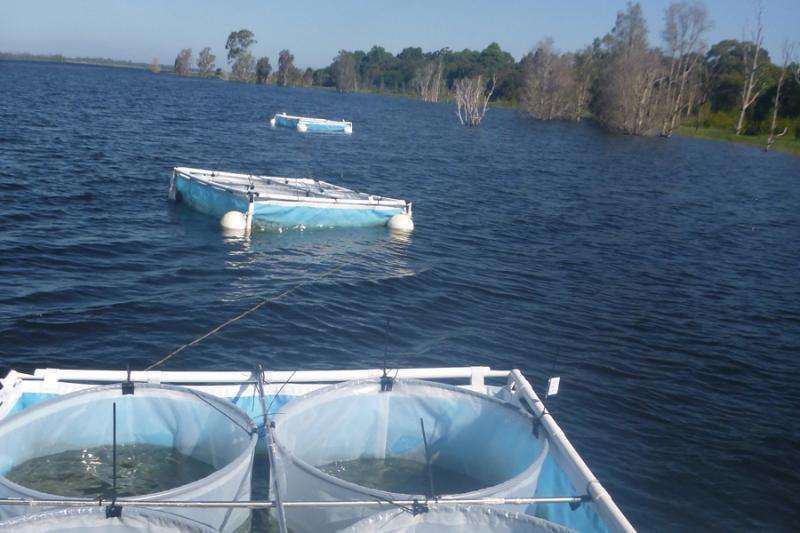Study provides new insights on water quality management

A two-year study into the factors affecting the growth of algae in Grahamstown Dam, Newcastle's main drinking water supply, will help authorities determine the catchment priorities needed to maintain high drinking water quality.
The study provides guidance for reservoir management by investigating the "limiting nutrient" concept as a way of controlling algal growth and could lead to changes in the way drinking water storages are managed worldwide to prevent algal blooms.
Algal blooms, especially if dominated by potentially toxic cyanobacteria, can have serious health consequences for humans and livestock. UTS environmental scientists and Hunter Water have partnered to look at the effect of increasing nutrient concentrations, principally phosphorus and nitrogen, on algal growth. The study also examined the role of dam sediments as a source of nutrients.
Co-authors of the study Drs Stefanie Mueller and Simon Mitrovic say that the study has important insights for future reservoir management.
"The nutrient phosphorus has long been regarded as the key to algal growth in freshwater systems. However our results show that both phosphorus and nitrogen are equally important for growth of algae.
"Under regular conditions sediments play an important role in removing nitrogen from the water, limiting algal growth. Our research shows however that under low oxygen conditions sediments release considerable amounts of nitrates which can spark significant increases in algal growth.
"This means drinking water reservoir management needs to take into account the amount of nitrogen the sediments in Grahamstown Dam contribute to water column concentrations when setting limits for concentrations of nitrogen pumped into the lake. Currently water quality management is only based on total phosphorus concentration and cyanobacterial numbers in the dam.
"With more than 48,000 large drinking water dams operational worldwide, this research aids in furthering understanding and management of reservoirs to protect human health."
Hunter Water is currently undertaking Australia's largest riverbank protection project on 23km of the Williams River and is working with local dairy farmers to reach best practice environmental management. These projects, funded as part of a four-year catchment improvement program, will help control both nitrogen and phosphorus in the lower Williams River.
The study was funded by Hunter Water under the Grahamstown Dam Adaptive Management Strategy and was further facilitated with input from Dr Darren Baldwin from the CSIRO Land and Water Flagship. The research was undertaken as part of Dr Mueller's doctoral thesis.
More information: Stefanie Müller et al. Phytoplankton co-limitation by nitrogen and phosphorus in a shallow reservoir: progressing from the phosphorus limitation paradigm, Hydrobiologia (2014). DOI: 10.1007/s10750-014-2082-3
Stefanie Müller et al. Oxygen and dissolved organic carbon control release of N, P and Fe from the sediments of a shallow, polymictic lake, Journal of Soils and Sediments (2015). DOI: 10.1007/s11368-015-1298-9
Journal information: Hydrobiologia
Provided by University of Technology, Sydney



















